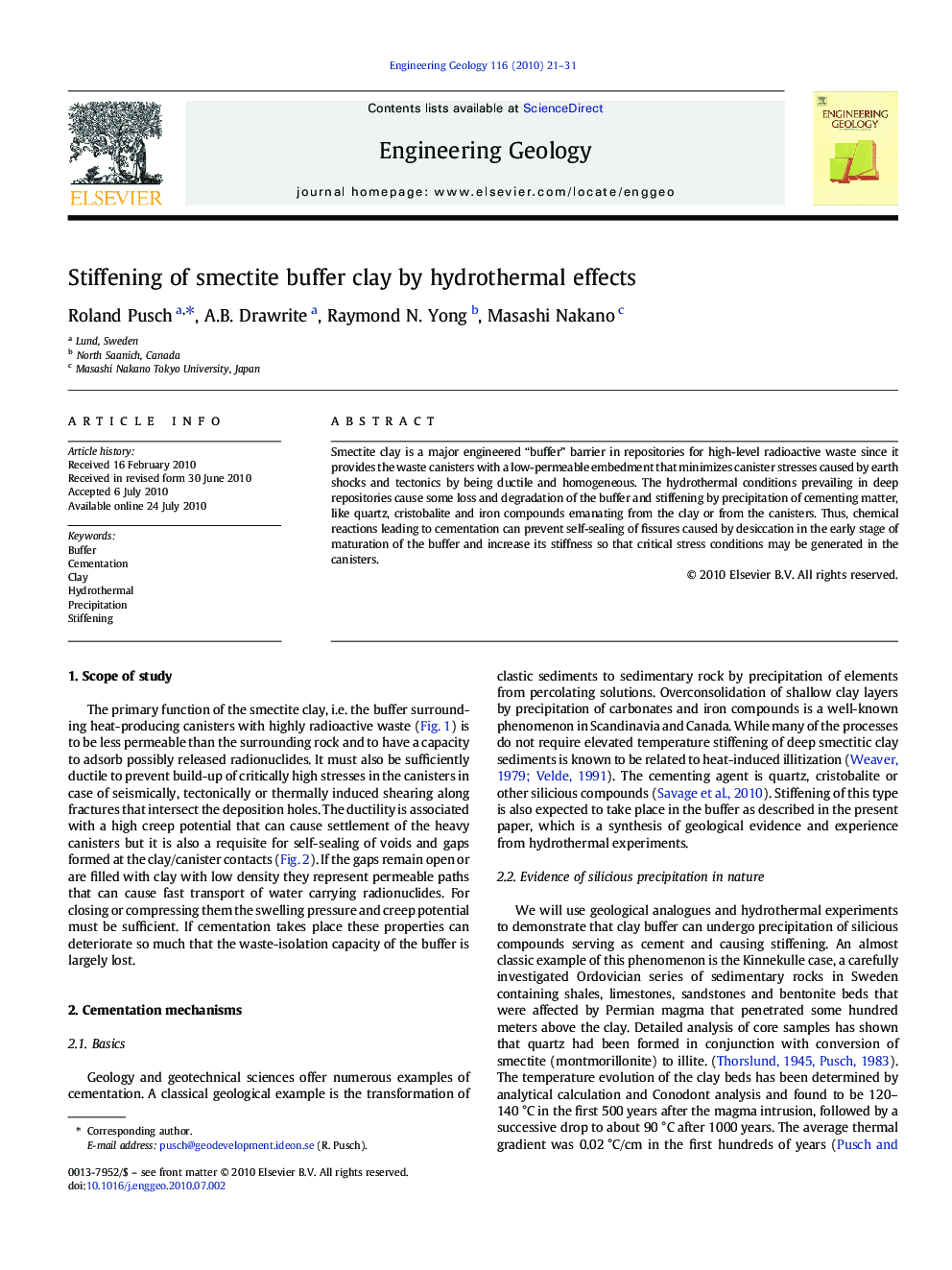| کد مقاله | کد نشریه | سال انتشار | مقاله انگلیسی | نسخه تمام متن |
|---|---|---|---|---|
| 4744463 | 1641862 | 2010 | 11 صفحه PDF | دانلود رایگان |

Smectite clay is a major engineered “buffer” barrier in repositories for high-level radioactive waste since it provides the waste canisters with a low-permeable embedment that minimizes canister stresses caused by earth shocks and tectonics by being ductile and homogeneous. The hydrothermal conditions prevailing in deep repositories cause some loss and degradation of the buffer and stiffening by precipitation of cementing matter, like quartz, cristobalite and iron compounds emanating from the clay or from the canisters. Thus, chemical reactions leading to cementation can prevent self-sealing of fissures caused by desiccation in the early stage of maturation of the buffer and increase its stiffness so that critical stress conditions may be generated in the canisters.
Research Highlights
► The major findings in the project described in the paper were:
► Stiffening recorded as a significantly reduced strain rate at uniaxial compression of hydrothermally treated expandable clays has been documented. The phenomenon is familiar from nature where bentonites have been heated by intruding diabase dikes. The series of laboratory tests confirm that the same processes take place under controlled conditions.
► The scientific explanation of the stiffening is that the clays and accessory minerals undergo partial dissolution with release of silica that is reprecipitated as cementing substance, and that illite formed by conversion of the smectite minerals or by neoformation also serves as cementitious agent.
► The practical consequence of the finding is that expandable clays used as embedding isolation of hot canisters with highly radioactive waste can lose their ductility and become stiff enough to transfer high rock stresses to the canisters so that they break and release radionuclides to the surroundings.
Journal: Engineering Geology - Volume 116, Issues 1–2, 27 October 2010, Pages 21–31